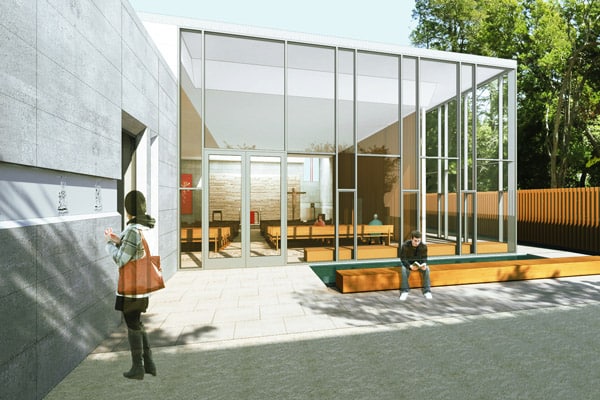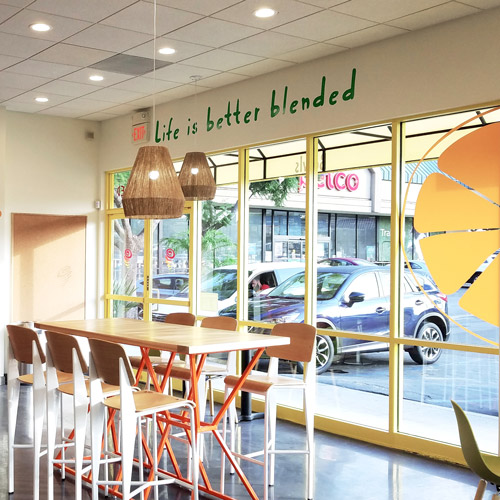
Mark Cavagnero has lived and practiced in the San Francisco Bay Area for 30 years, but he is still in awe of his adopted city. He grew up in a small town in Connecticut but completed his graduate work in architecture at the University of California, Berkeley. He fell in love with the area’s natural beauty, the rich history, from the gold rush days and the transition from its blue collar roots to today’s technology boom. “People from all over the world have come here chasing their dreams and visions,” he says. “It is such an unusual city, with an expansive culture.” And his 75 person firm, Mark Cavagnero Associates, is contributing to the evolving urban fabric with carefully crafted and highly distinctive architecture.
San Francisco was originally patterned after New York, he says. “But now, we don’t want to be New York, Paris or London. We are happy being San Francisco, and that transition has been fascinating to me. We don’t look at other cities any more. We confidently talk about what we should be doing here, as a leader, not a follower”
Cavagnero first worked in New York City for a few years before moving back to the Bay Area in the late 1980s. One of his first major projects was a renovation and expansion of the famed Legion of Honor Museum, which he did in conjunction with architect and his mentor Edward Larrabee Barnes. “It was very well received; people liked it,” Cavagnero says. “I was 35 years old, and I started to get phone calls for new work.” Many of those calls came from small arts groups, which excited him. “I worked for a lot of community-based and small nonprofits—theaters, art schools, Montessori schools. It was small money but I really liked the people, their mission and their commitment to the community.”
In fact, that would become his “business plan”: working with people he admired who were driven to make the community a better place. “The more I did that, the more I learned about and became enmeshed in San Francisco,” he says. “I developed a deeper appreciation of the uniqueness of the city and its culture.”
His office grew as he took on more projects, primarily renovations for a decade or so. That led to commissions for state and local projects like state courthouses, community colleges and universities. But his breakthrough project, he says, came about in 2001, when he turned a public school into an art school in Silicon Valley. “We built a new ground-up building, which was a dream project for me,” he says. When it opened, in 2004, it won a sole Honor Design Award from the California chapter of the American Institute of Architects. “That opened up doors, and we got exposed to larger and larger projects,” he explains, noting that most were city projects. “As our connections to city officials and bureaus grew stronger, they started trusting us more. I shared their energy in making San Francisco an ever-improving city.”
His design ideology and approach is to keep an open mind. “I try to not bring any preconceptions to a project,” he says. “A good, modern building should respond to the site and the program. If you can develop a building that is unique for the site and celebrates the program, you have done a good building.”
Among the buildings Mark Cavagnero is proudest of are:
Mission Plaza
Also known as Salesforce Tower, because it houses the technology giant, it sits above the new Transbay Terminal building through which 100,000 visitors will travel every day. “It is San Francisco’s front door for public transit,” he says. Overcoming a host of technical, security and lighting issues has also made it a beautiful outdoor living room for that part of the city.
The Lighthouse
This project, for a nonprofit organization that helps recently blinded adults learn how to cope with their challenges, focused on minimizing the frustrations and anxiety of the people needing its services. “This was a real education for us, and it helps a lot of people,” he says. “We learned how to communicate with our client, who is also blind, and to appreciate how the careful use of touch, smell, and hearing are intentionally intensified for the users”.
UCSF Weill Institute for Neurosciences
This world-class facility marries the technology and research at the cutting edge of neuroscience. The project incorporates research with clinical programs, which is highly unusual, and uses natural light to make interior spaces welcoming and inviting for everyone. “The scientists tell us that major breakthroughs would not be possible without such a facility,” Cavagnero says.

St. Mary’s College Student Chapel
This college educates a large number of disadvantaged students, he says. “They wanted a chapel to inspire these kids, to give them a place to go when they are down or worried or needy,” he says. “I met with the kids, and they really inspired me with how thoughtful and intelligent they are.”

The SFJAZZ Center
This international destination for music lovers is also neighborhood-friendly. “The founder and I shared the sense that the building be both a destination and part of the community, an emerging residential part of city, and that it should not appear monumental or over scaled,” he says. An all-glass street level, he says, is “transparent and very inviting. If you walk by you almost feel like you are in it, and it entices you to come in and learn about jazz and enjoy the music.”

All these projects and others like them define who Cavagnero is and what he does. “We feel a strong connection to our humble past from the non-profit community oriented projects which gave us the opportunity to take on projects we now work on in the Bay Area. We continue to admire the clients we work with and the communities they serve,” he says. “That was my business plan—I just didn’t know it when I started.”
Photos: Tim Griffith, Matthew Millman, Courtesy of Mark Cavagnero Associates


